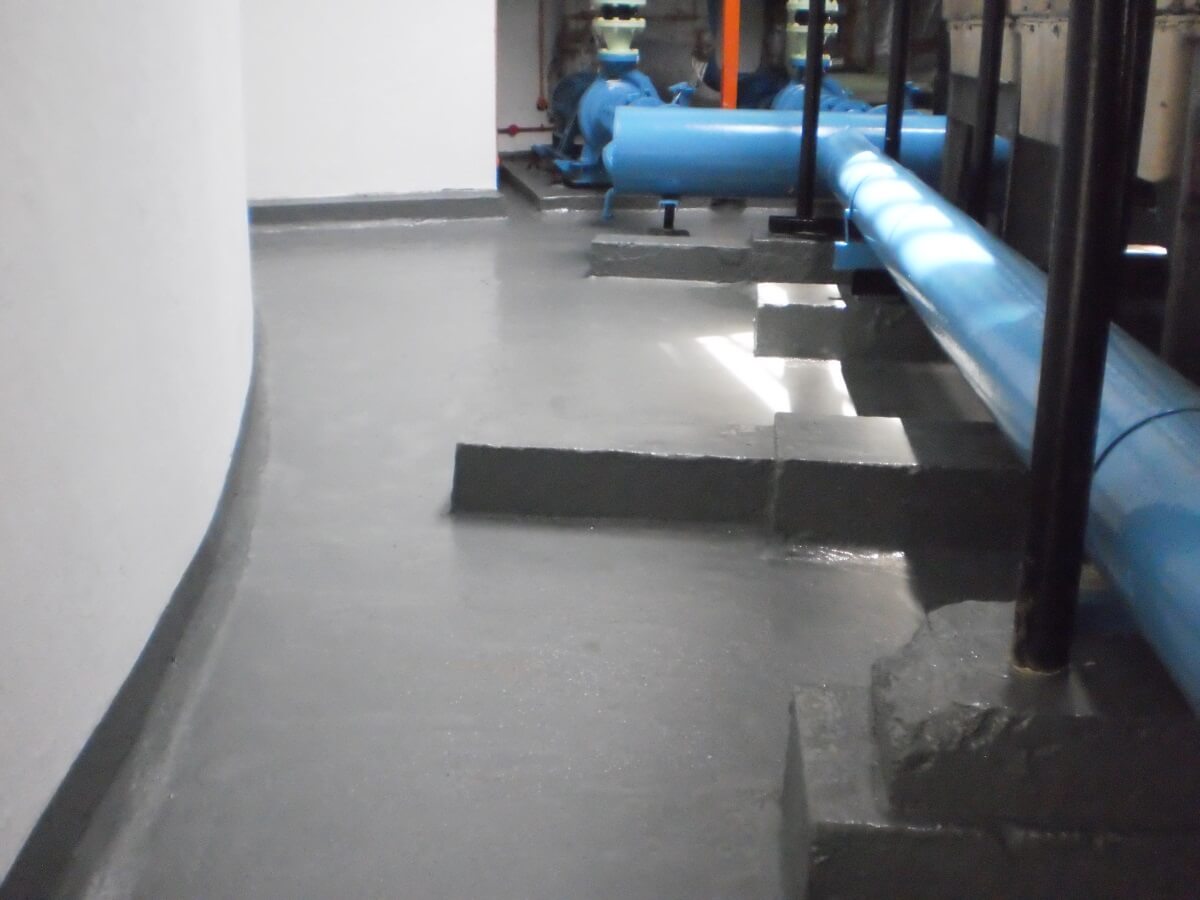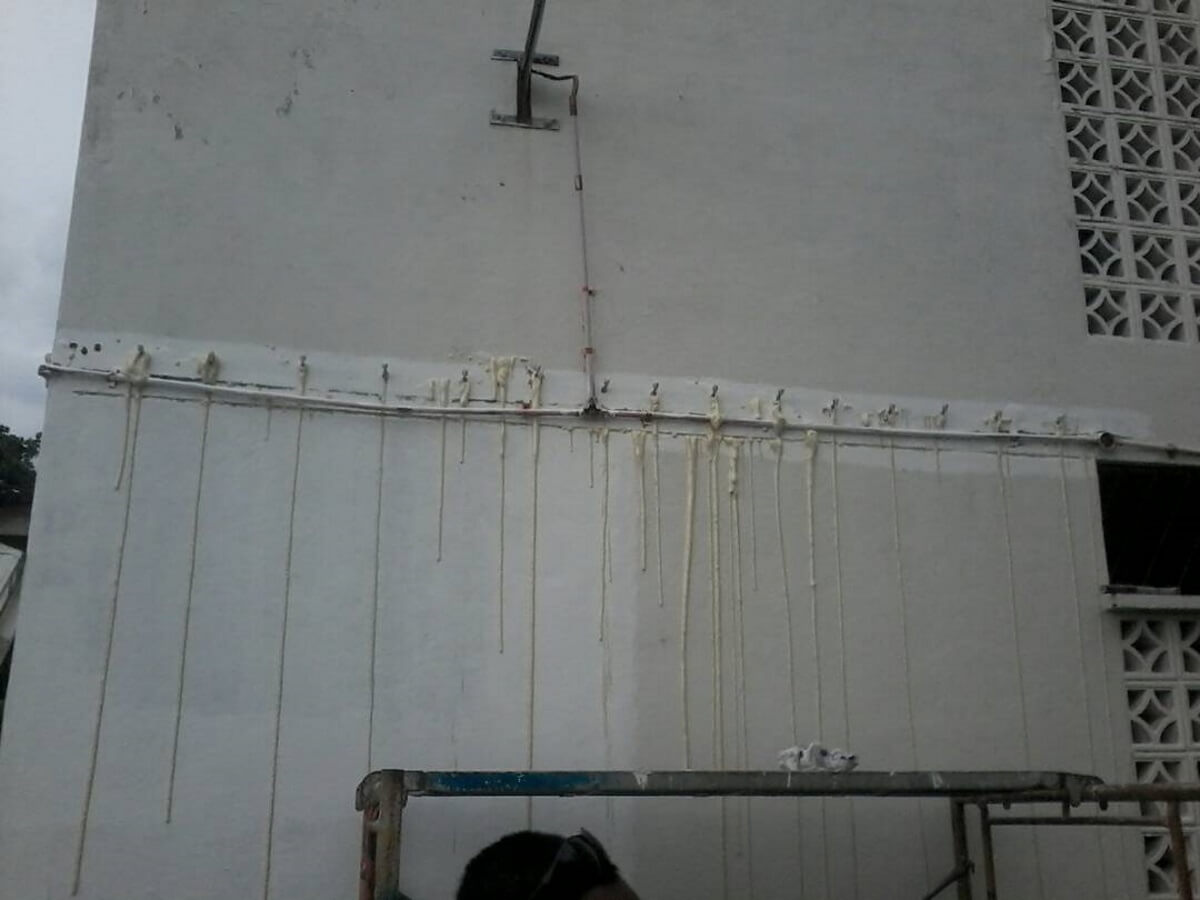Waterproofing
In construction, a building or structure is waterproofed with the use of membranes and coatings to protect contents, and structural integrity. Waterproofing in buildings and structures are generally required for basement of structure, walls, bathrooms and kitchen, balconies, decks, terrace or roofs, green roofs, water tanks and swimming pools etc. Waterproofing systems are designed to provide protection from water ingress and damage from the basement to the roof.
Polyurea spray applied fast cure membrane systems can cope with the most rigorous waterproofing demands. These systems used from basement to roof and in many civil engineering applications. This system comprises of a number of innovative products which allow a light trafficable decking system to be applied in 8 hours and open for traffic in 12.
It also includes the toughest liquid applied membrane on the market with true crack bridging capabilities. This system is the choice of external waterproofing when complex shapes and fast protection are required. It provides the ultimate waterproofing solutions in all areas of external waterproofing.
Many moisture problems can't be remedied or lessened with ventilation, or by fixing internal sources of moisture.
When the source of moisture at the foundation (concrete basement, but also crawl spaces and slab) solving the moisture problem demands drainage, waterproofing and insulation of the external faces of the foundation walls. Insulating the interior walls doesn't fix structural problems associated to exterior moisture sources.
Most concrete leaks have one thing in common—they can be stopped with the strategic use of polyurethane grouts. These grouts stop leaks by forming expansive, closed cell foams when they contact water and then adhere to concrete surfaces. There are a variety of unique problems that exist on each project, but with experience, innovation, the right product, and the right equipment the leaks are stopped.
Injections of polyurethanes have stopped costly and damaging leaks in concrete reservoirs (above and below grade, potable and no potable), parking garages, concrete dams, earthen damps, manholes, honeycombed concrete, elevator pits, pipe intrusions, seawalls, tunnels, expansion joints, basements, swimming pools, and etc. Injecting polyurethane can stop leaks, fill voids, provide structural support, and stabilize soils.
This is a cost-effective way of restoring concrete and stopping the deterioration that moisture can cause to steel reinforcement. The application methods are varied, but each is minimally intrusive.























